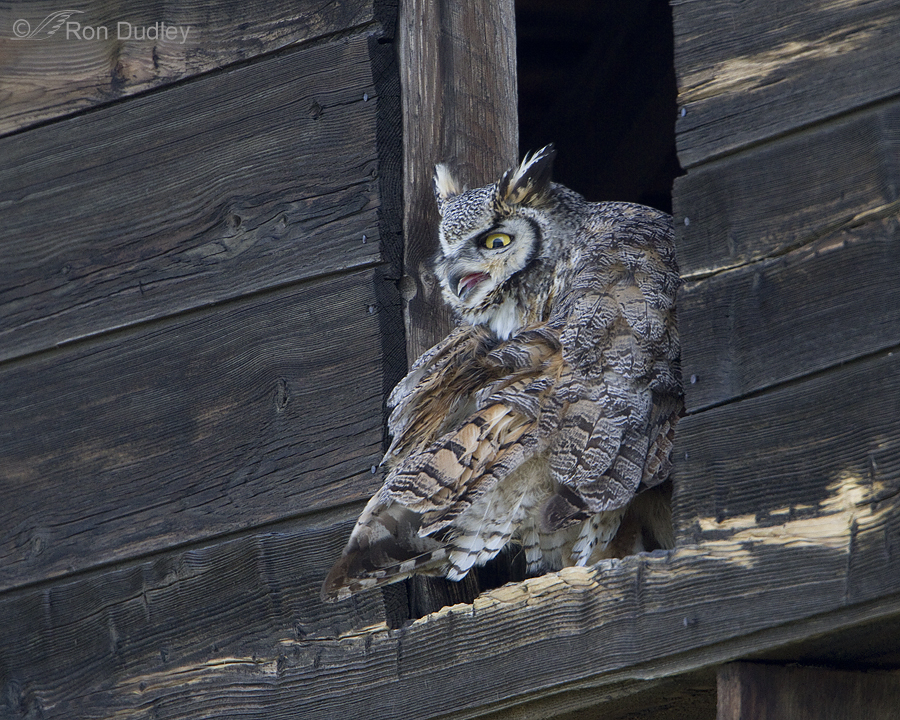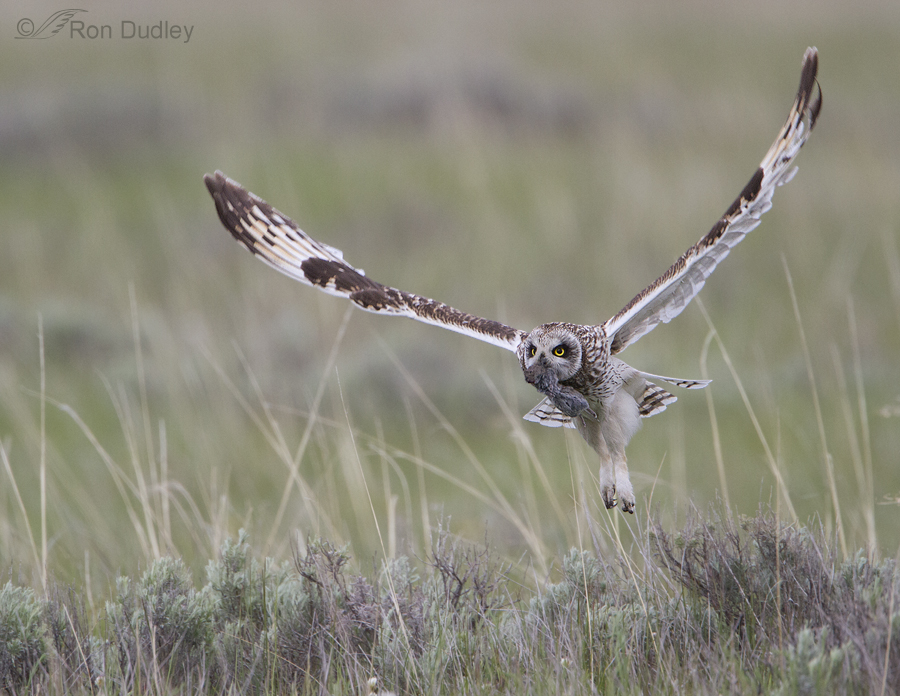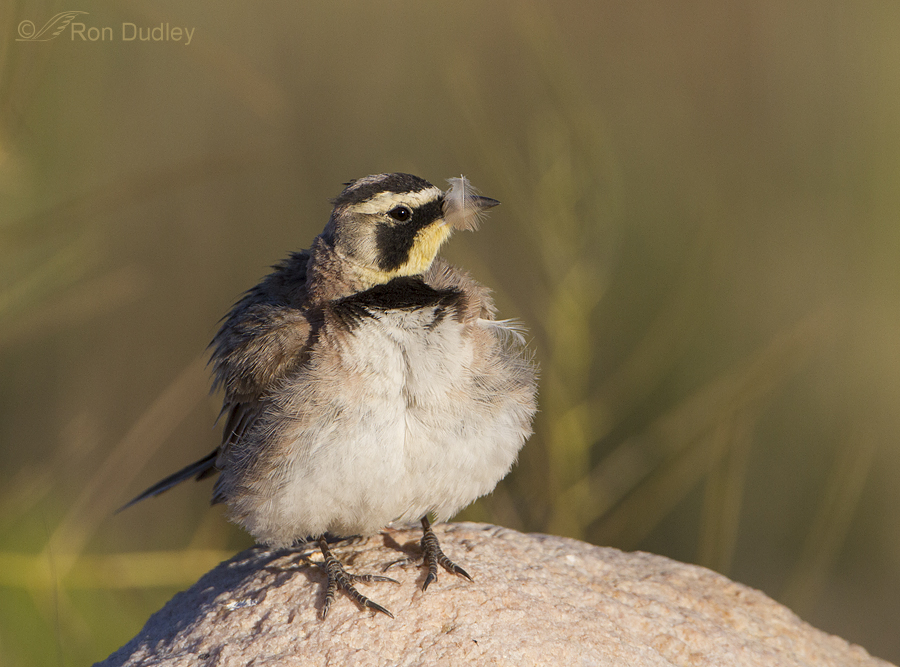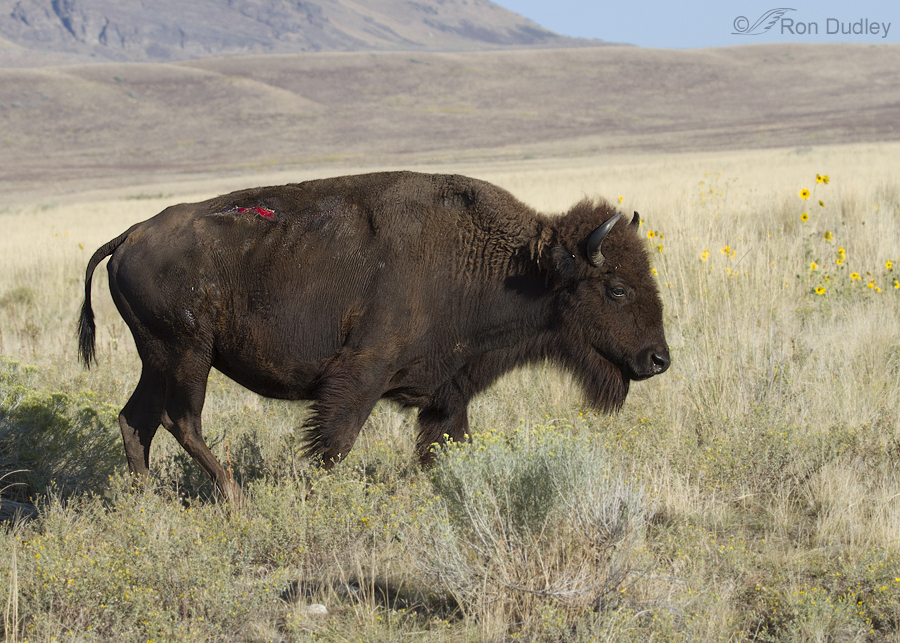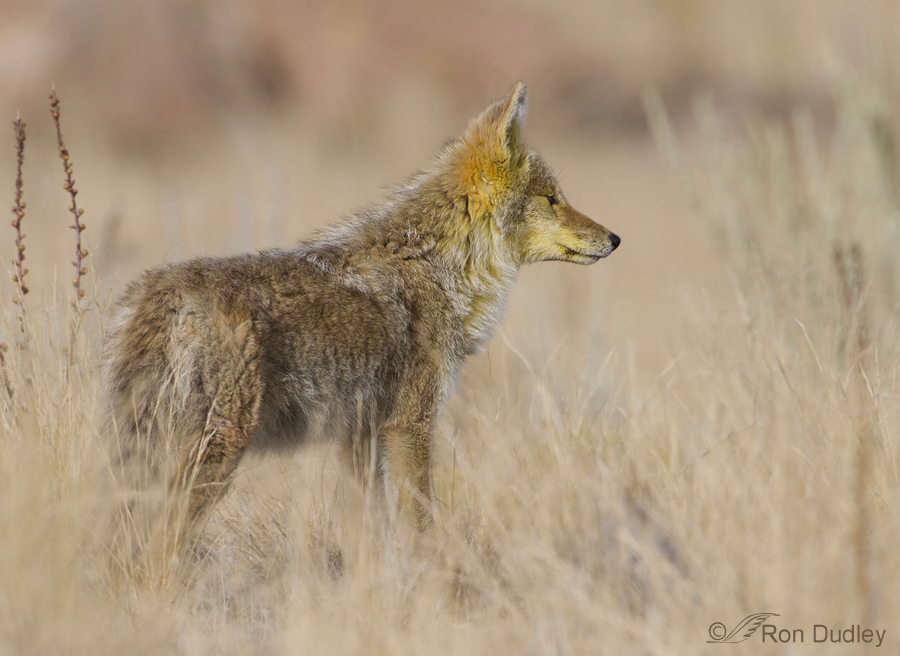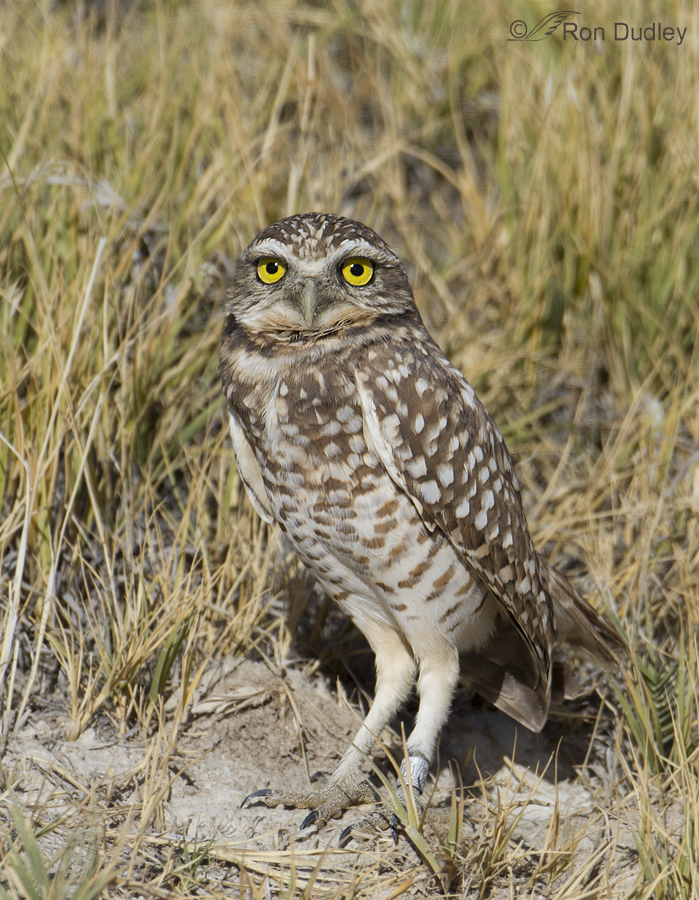Category: Favorite Locations
Short-eared Owl Carrying A Vole In Its Beak (for a change)
Birds Befuddled By Stray Feathers
Black-billed Magpie In Full Flight (not taking off)
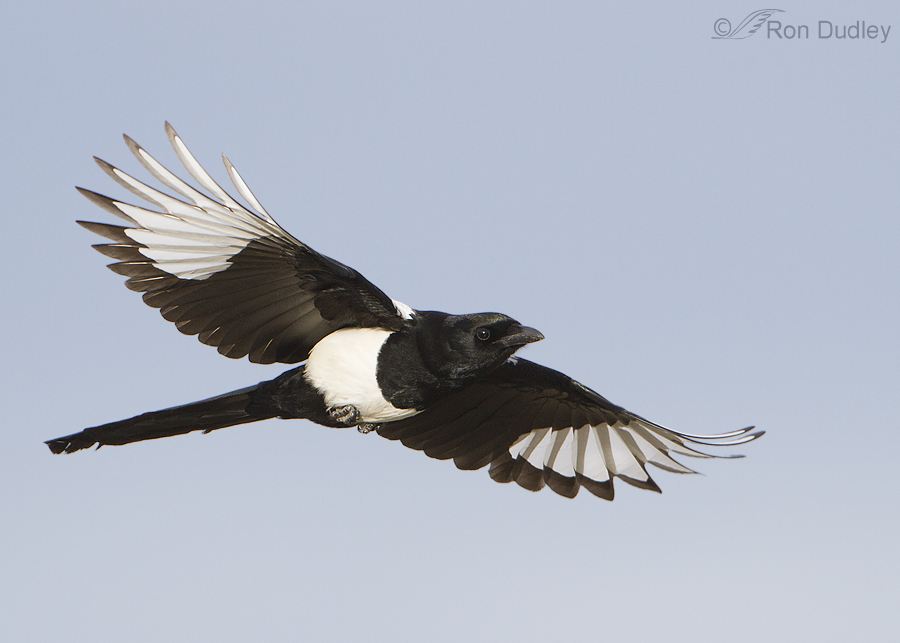
Magpies aren’t among the most glamorous of birds so they don’t get a lot of attention from photographers but I enjoy them for their fascinating behaviors, their gutsiness and their apparent intelligence. And if you want a particularly challenging photographic subject you can’t go wrong with the Black-billed Magpie.
Short-eared Owls And The “Handedness Phenomenon”
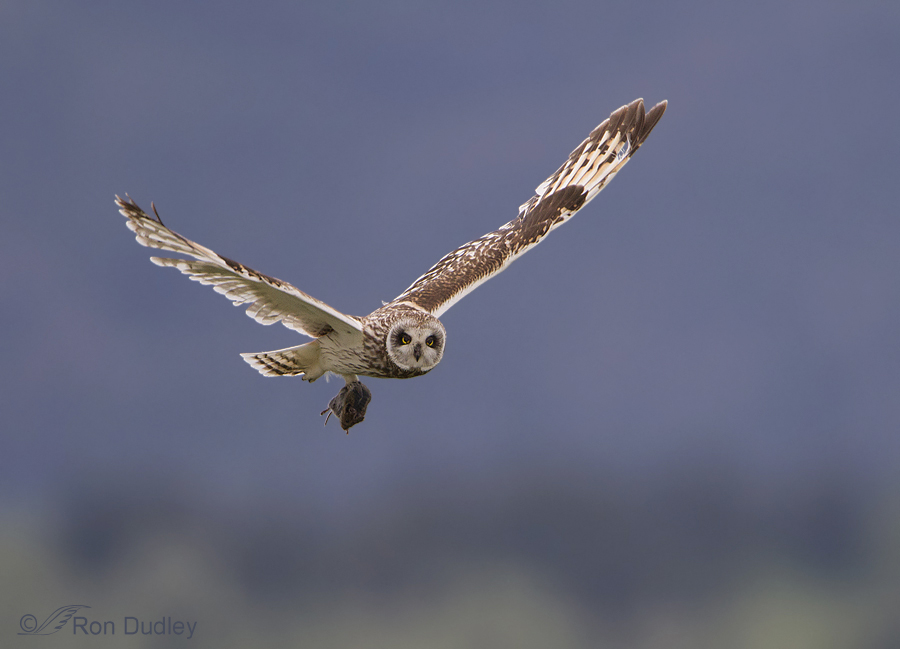
Handedness is a preference for using one hand (or limb) as opposed to the other. It’s a phenomenon many of us associate strictly with humans but other vertebrates can also show handedness, including birds. For example, many parrot species have a strong and consistent preference for using their left foot when bringing food to the beak.
Based on my own observations in the field I believe that Short-eared Owls may also display handedness.
Chukar Calling On One Foot

Chukars continue to be one of my preferred subjects during the winter and spring due to their distinctive and colorful plumage and their often comical behavior. They are abundant on Antelope Island and even somewhat approachable there – at least in comparison to their skittish and wily ways elsewhere (hunters consider them to be among the most challenging of upland game species).
Birds “Wearing To Dark” – Some Visual Evidence As To Why
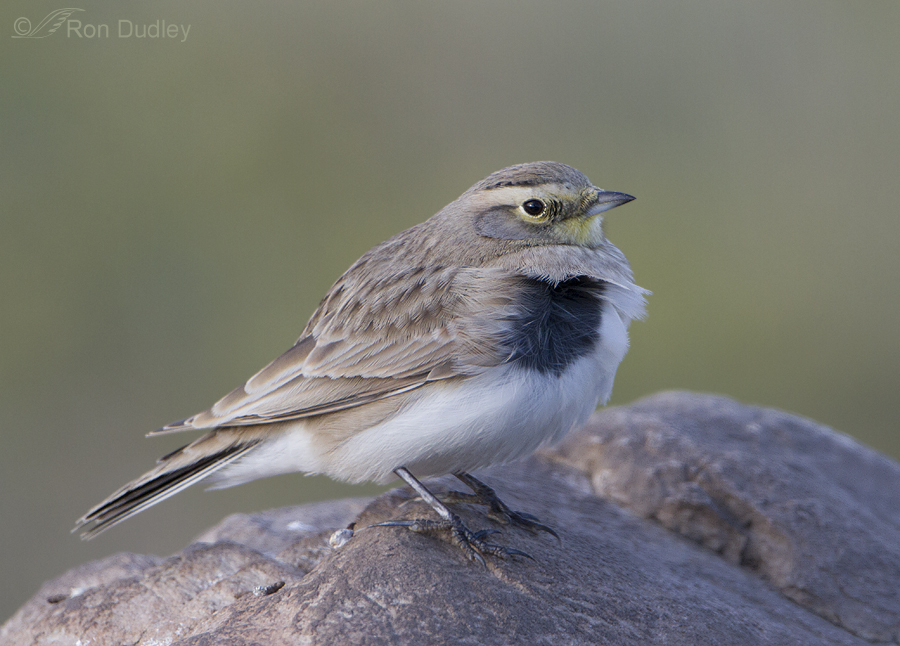
This past summer I posted these first two Loggerhead Shrike images as evidence that the ventral colors of the species change from white to almost black as the summer wears on and asked my readers why this occurs. Several responded with a logical explanation.
Three days ago I photographed a Horned Lark that may demonstrate that those readers were right.
Mourning Dove – Why Do I Usually Ignore The Common Species?
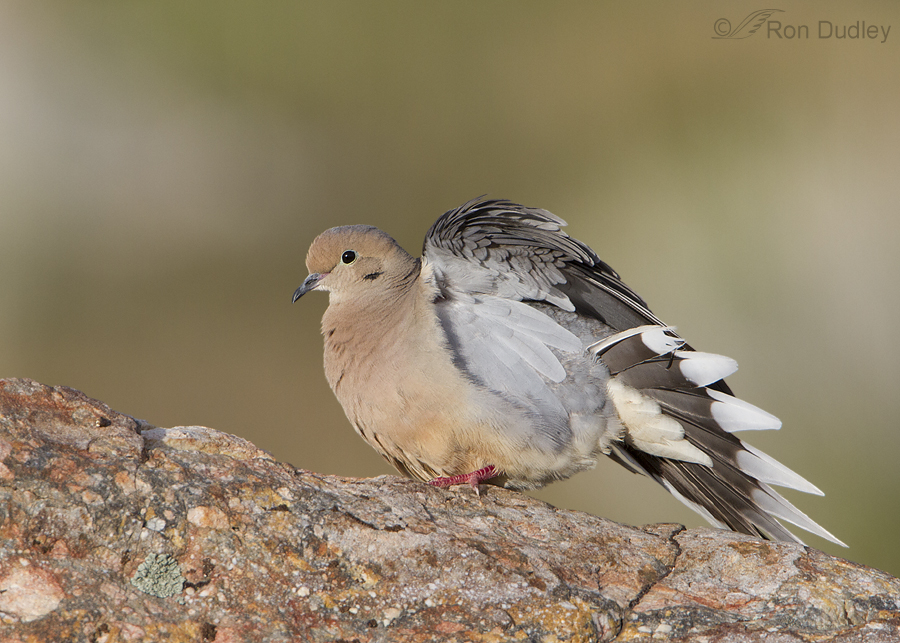
As a bird photographer I continually struggle with the tendency to ignore the more common species. This is a bad habit I’ve tried to break over the years but my success has been limited so I still too often pass on opportunities with species like the American Robin, House Finch, American Coot and Mourning Dove. Many fellow photographers have the same tendency and I think we miss some wonderful shots as a result.
A Bison’s Life Isn’t Easy
A Curious Coyote, A Reflection And A Compositional Quandary
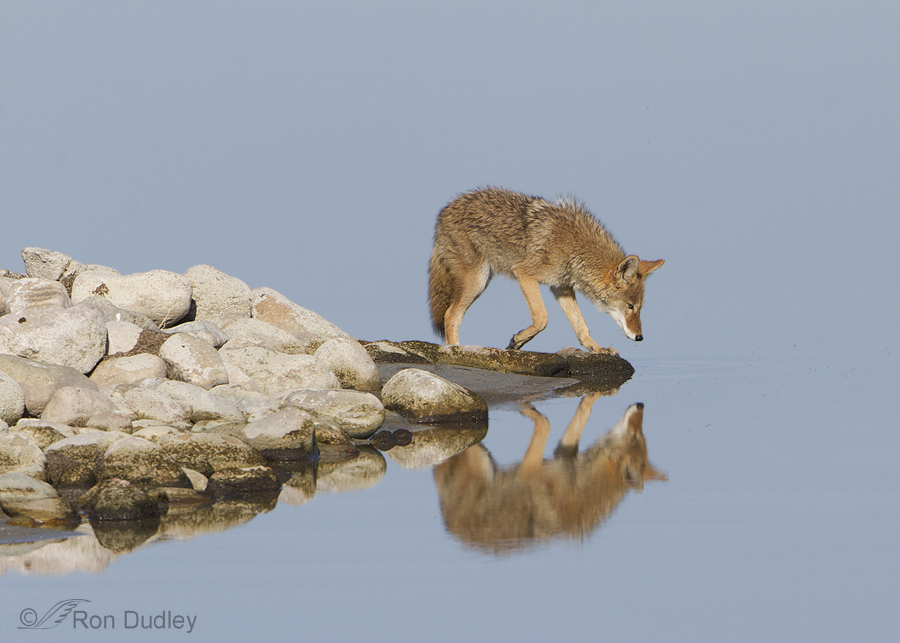
Two days ago we found this coyote exploring along the Antelope Island causeway. We watched it gnaw on a duck or shorebird carcass (possibly falcon leftovers, based on past experience) and then it continued to look for something, almost anything, to eat. When it reached the end of a rocky spit jutting out into the Great Salt Lake it entertained us with some interesting behavior.
Coyote Stained Yellow
Finally! – Another Antelope Island Burrowing Owl
The Interdependence Of Short-eared Owls And Voles
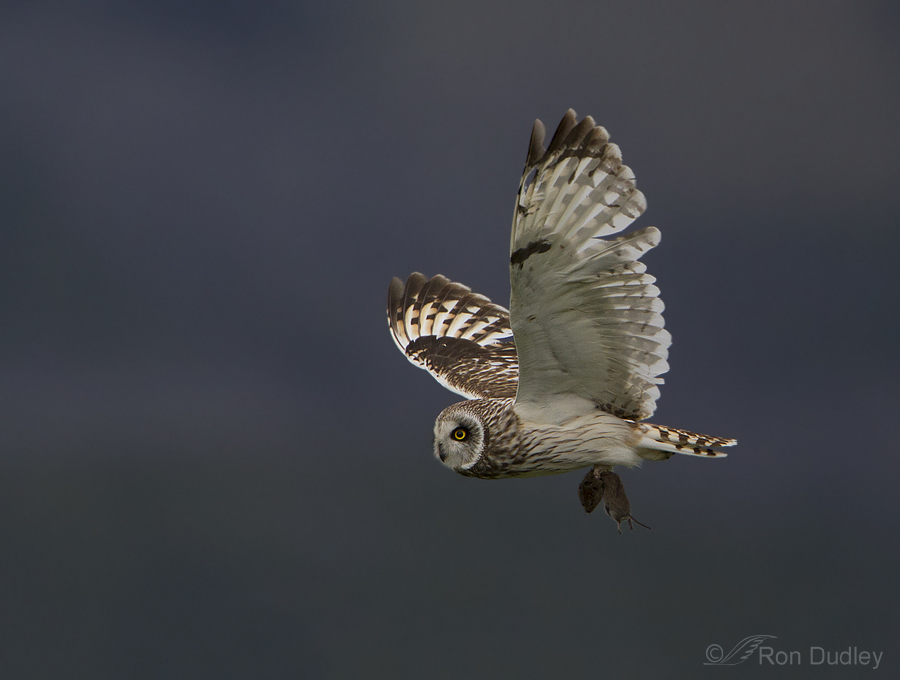
Though Short-eared Owls are one of the worlds most widespread owls, the species is highly dependent on the density of its small mammal prey, voles in particular. Since vole populations fluctuate wildly, Short-eared Owls show significant local variation in numbers and reproductive success from year to year.
Perch-hunting Red-tailed Hawk
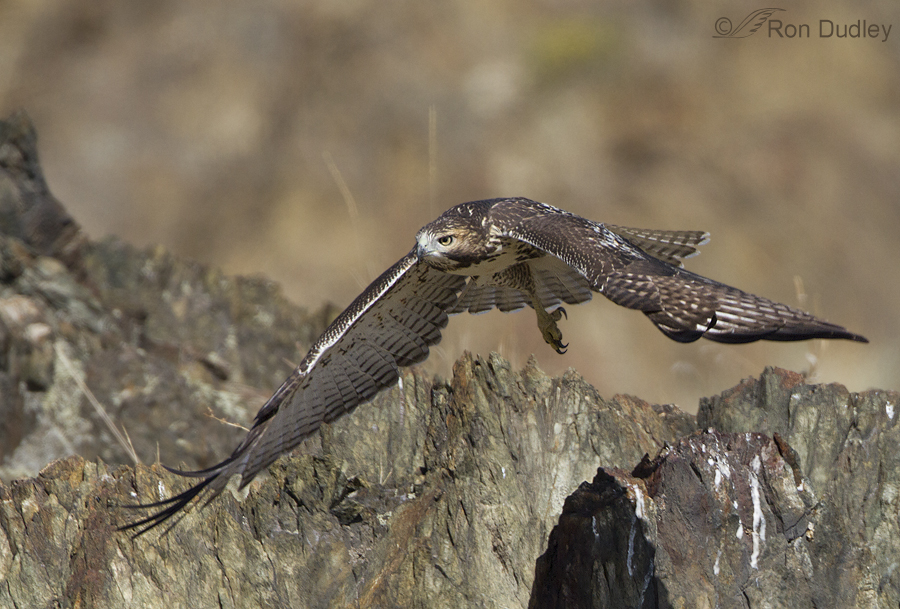
Red-tailed Hawks in North America are “sit and wait predators” who do most of their hunting (60 – 80%) from elevated perches. Though they do hunt from the air, that is not their primary hunting style. In fact, availability of elevated perches is a key factor in determining their foraging distribution.
Antelope Island is largely treeless and without power poles so Red-tails tend to be found in specific locations on the island where elevated natural perches are available. One of their favorite foraging spots is an area where there are large outcroppings of Farmington Canyon Complex rocks jutting out from the side of a small mountain, which is where I found this bird hunting voles
Burrowing Owl In Dramatic Side Light
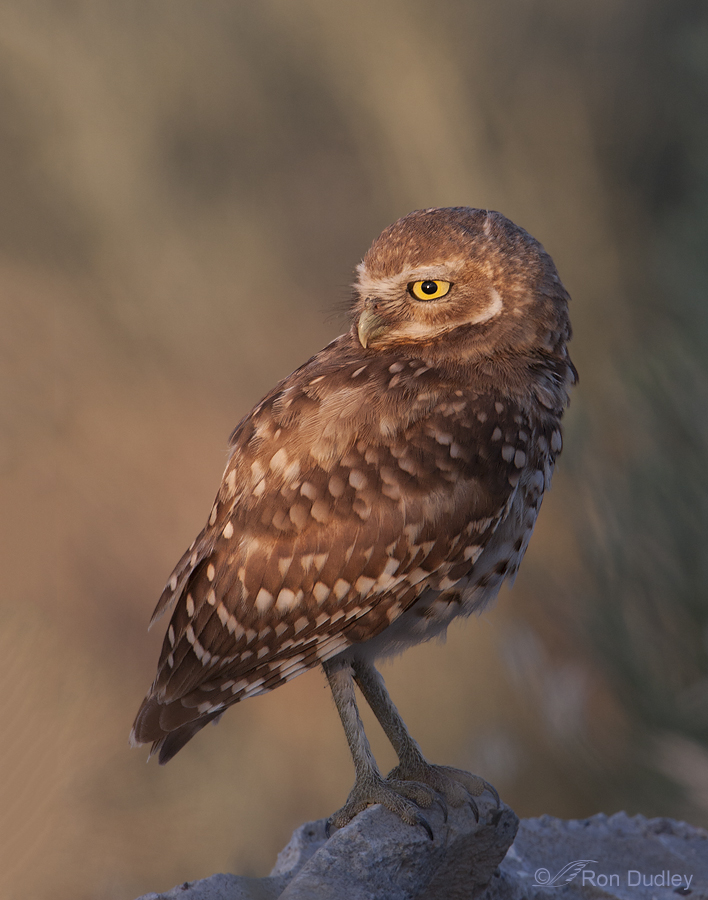
As every photographer knows, light angle can make or break an image. In static portrait shots especially, partial side lighting (at perhaps 45 degrees to your subject) emphasizes texture, patterns and shapes and helps to separate subject from background. It’s been said that side light “sculpts” your subject.
Short-eared Owl Carrying A Vole In Its Beak (for a change)
Birds Befuddled By Stray Feathers
Black-billed Magpie In Full Flight (not taking off)

Magpies aren’t among the most glamorous of birds so they don’t get a lot of attention from photographers but I enjoy them for their fascinating behaviors, their gutsiness and their apparent intelligence. And if you want a particularly challenging photographic subject you can’t go wrong with the Black-billed Magpie.
Short-eared Owls And The “Handedness Phenomenon”

Handedness is a preference for using one hand (or limb) as opposed to the other. It’s a phenomenon many of us associate strictly with humans but other vertebrates can also show handedness, including birds. For example, many parrot species have a strong and consistent preference for using their left foot when bringing food to the beak.
Based on my own observations in the field I believe that Short-eared Owls may also display handedness.
Chukar Calling On One Foot

Chukars continue to be one of my preferred subjects during the winter and spring due to their distinctive and colorful plumage and their often comical behavior. They are abundant on Antelope Island and even somewhat approachable there – at least in comparison to their skittish and wily ways elsewhere (hunters consider them to be among the most challenging of upland game species).
Birds “Wearing To Dark” – Some Visual Evidence As To Why

This past summer I posted these first two Loggerhead Shrike images as evidence that the ventral colors of the species change from white to almost black as the summer wears on and asked my readers why this occurs. Several responded with a logical explanation.
Three days ago I photographed a Horned Lark that may demonstrate that those readers were right.
Mourning Dove – Why Do I Usually Ignore The Common Species?

As a bird photographer I continually struggle with the tendency to ignore the more common species. This is a bad habit I’ve tried to break over the years but my success has been limited so I still too often pass on opportunities with species like the American Robin, House Finch, American Coot and Mourning Dove. Many fellow photographers have the same tendency and I think we miss some wonderful shots as a result.
A Bison’s Life Isn’t Easy
A Curious Coyote, A Reflection And A Compositional Quandary

Two days ago we found this coyote exploring along the Antelope Island causeway. We watched it gnaw on a duck or shorebird carcass (possibly falcon leftovers, based on past experience) and then it continued to look for something, almost anything, to eat. When it reached the end of a rocky spit jutting out into the Great Salt Lake it entertained us with some interesting behavior.
Coyote Stained Yellow
Finally! – Another Antelope Island Burrowing Owl
The Interdependence Of Short-eared Owls And Voles

Though Short-eared Owls are one of the worlds most widespread owls, the species is highly dependent on the density of its small mammal prey, voles in particular. Since vole populations fluctuate wildly, Short-eared Owls show significant local variation in numbers and reproductive success from year to year.
Perch-hunting Red-tailed Hawk

Red-tailed Hawks in North America are “sit and wait predators” who do most of their hunting (60 – 80%) from elevated perches. Though they do hunt from the air, that is not their primary hunting style. In fact, availability of elevated perches is a key factor in determining their foraging distribution.
Antelope Island is largely treeless and without power poles so Red-tails tend to be found in specific locations on the island where elevated natural perches are available. One of their favorite foraging spots is an area where there are large outcroppings of Farmington Canyon Complex rocks jutting out from the side of a small mountain, which is where I found this bird hunting voles
Burrowing Owl In Dramatic Side Light

As every photographer knows, light angle can make or break an image. In static portrait shots especially, partial side lighting (at perhaps 45 degrees to your subject) emphasizes texture, patterns and shapes and helps to separate subject from background. It’s been said that side light “sculpts” your subject.


